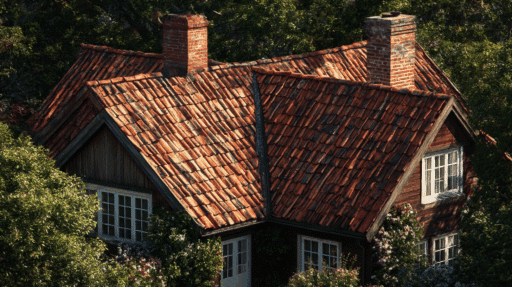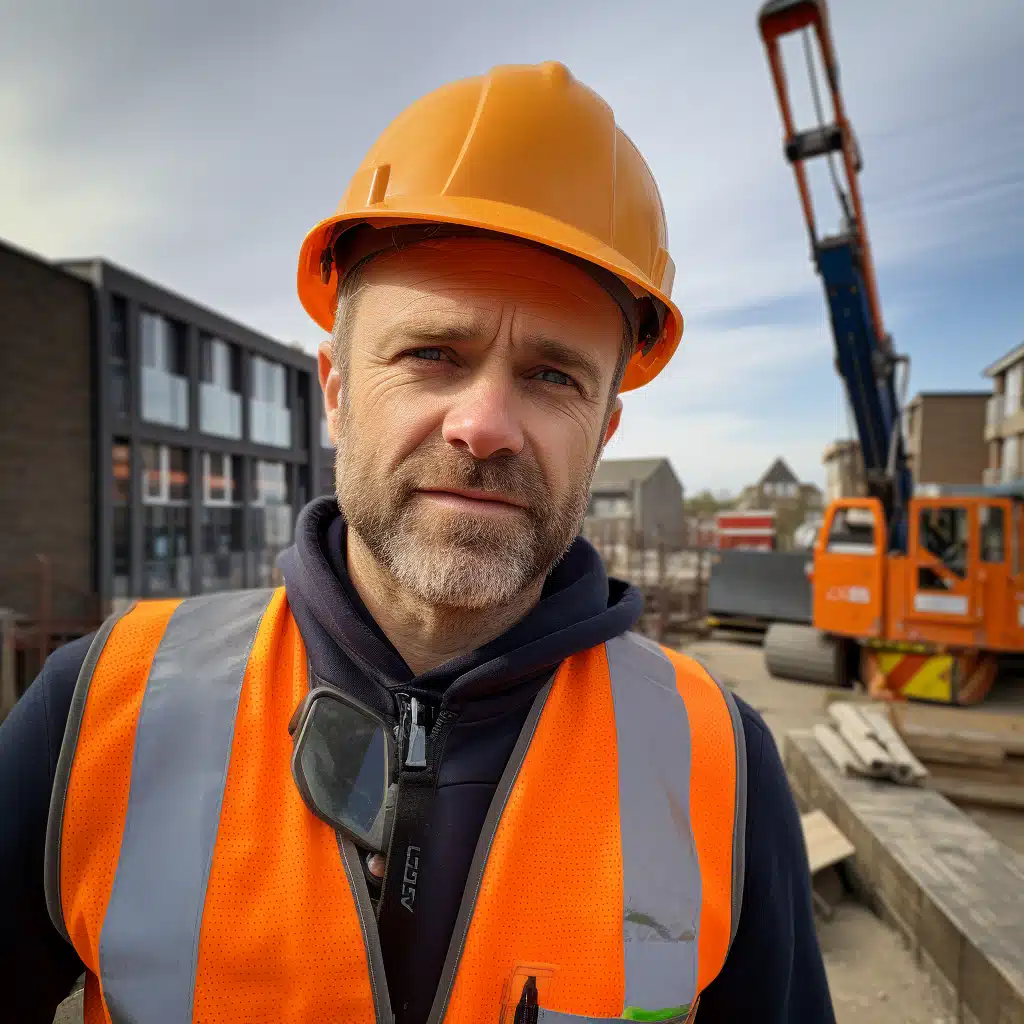Looking up at your roof, you might wonder if it’ll outlast your mortgage.
If you’re curious about how long do tile roofs last in general, you’re in the right spot. Tile roofs are the marathon runners of roofing.
While other materials give up after 15-20 years, tile roofs are just getting started. They’re like that reliable friend who shows up to every party, decade after decade. Why care about roof lifespan?
Let’s talk about why tile roofs might be the best investment sitting above your head.
How Long do Tile Roofs last?
Tile roofs are among the most durable materials available, lasting 50-100+ years compared to asphalt shingles at only 20-30 years.
Clay tiles last 50-100+ years, concrete tiles provide 30-50 years, while slate exceeds 150 years.
Poor installation can reduce lifespan from 50 years to just 15-20 years, making certified contractors essential.
Despite higher upfront costs, tile roofs offer decades of protection with minimal maintenance for long-term homeowners.
Best Tiles for Roofs by Lifespan
Some tile roofs last way longer than others. Slate, clay, ceramic, and metal are the top four choices that homeowners love, but how long do tile roofs last exactly?
These materials can protect your house for 50-100+ years, significantly outperforming regular roofing when people ask.
Let’s look at these four amazing tile types and see why they last so long.
Slate Tile Roof

Slate tiles come from natural stone quarried from mountains, making them one of the strongest roofing materials available.
These heavy tiles resist fire, water, and extreme weather conditions better than most other options.
Professional installation is essential because slate tiles can crack if not properly managed, and they require strong structural support due to their weight.
While the upfront cost is higher, the long-term value makes slate an excellent investment for homeowners seeking permanent roofing solutions.
- Lifespan: 75-200 years of protection
- Pros: Longevity, Beauty, Durability, Value
- Cons: Weight, Cost, Installation, Repairs
- Fire Safety: Complete resistance to flames and heat
- Cost per square foot: $8 to $21
Clay Tile Roof
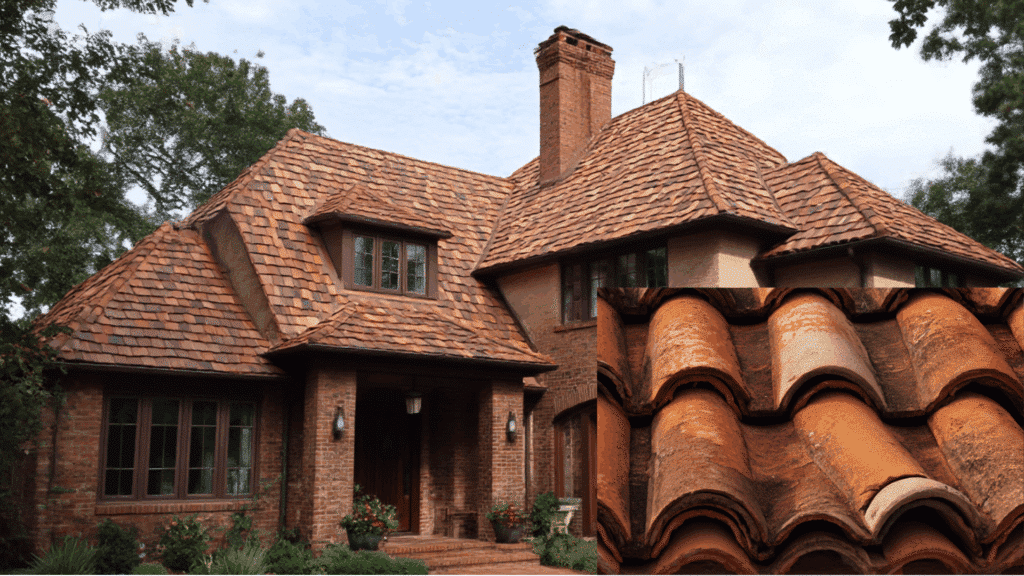
Clay tiles are made from natural earth materials that are shaped and fired in kilns at high temperatures.
This ancient roofing method has protected homes for centuries and works well in hot, dry areas by allowing air circulation underneath.
The manufacturing process produces tiles that resist moisture, insects, and rot, while maintaining their color over decades. However, individual pieces can be replaced if damaged.
Key Benefits:
- Lifespan: 50-100 years of reliable protection
- Pros: Affordability, Style, Cooling, Tradition
- Cons: Breakage, Weight, Climate, Maintenance
- Fire Safety: Complete protection against flames and sparks
- Easy Care: Simple cleaning and occasional tile replacement
- Cost per square foot: $8 to $22
Ceramic Tile Roof
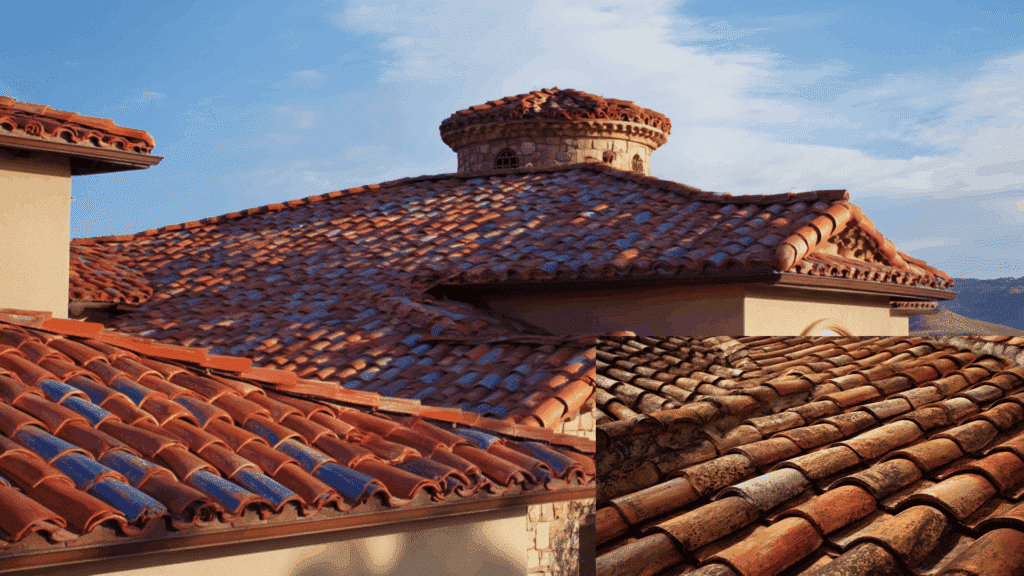
Ceramic tiles are manufactured using advanced technology that combines clay with other materials, then fired at extremely high temperatures for extra strength.
This modern process creates tiles that are more uniform than traditional clay options, offering homeowners a wide range of colors, textures, and shapes that won’t fade over time.
Installation requires experienced roofers who understand the specific mounting systems and weight distribution needed for ceramic materials.
Key Benefits:
- Lifespan: 50-75 years of dependable coverage
- Pros: Variety, Consistency, Modern, Affordable
- Cons: Newer, Limited, Weight, Installation
- Fire Safety: Excellent resistance to heat and flames
- Easy Care: Smooth surface resists dirt and algae buildup
- Cost per square foot: $11 and $27.50
Metal Tile Roof
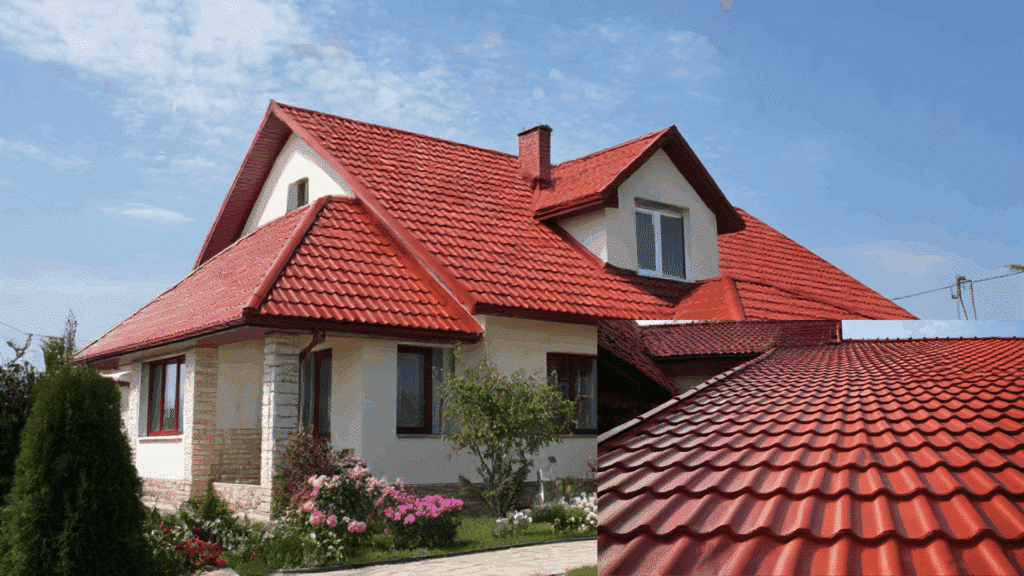
Metal tiles are engineered from steel, aluminum, or copper that’s formed into tile shapes and coated with protective finishes.
This manufacturing process produces roofing that weighs significantly less than stone or clay, while providing superior weather resistance.
Metal tiles expand and contract with temperature changes; therefore, proper installation includes fastening systems that allow for this movement.
Key Benefits:
- Lifespan: 40-70 years of solid protection
- Pros: Lightweight, Reflective, Fast, Recyclable
- Cons: Noise, Expansion, Denting, Appearance
- Fire Safety: Non-combustible material resists all flames
- Easy Care: Minimal maintenance with occasional inspections
- Cost per square foot: $6 to $21
Winner: Slate tiles take the crown for pure longevity, but clay tiles offer the best balance of lifespan, cost, and availability for most homeowners.
Factors to Keep in Mind Before Doing Roof Tiling
When planning roof tiling, several critical factors determine the success and longevity of your installation. Understanding how long does a roof last depends heavily on these preliminary considerations and proper planning.
Here are some essential factors to consider before starting your roof tiling project.
How Flashing Helps Extend the Life of Your Tile Roof
Your tile roof needs quality top flashing to stay watertight and protected.
This essential component directs water flow away from unsafe areas while sealing critical joints around chimneys and vents, preventing leaks before they start.
How long does a roof last? Quality flashing protects underlayment from rot and can be installed on existing roofs in colors that match your home’s exterior.
Investing in professional-grade flashing now saves thousands in water damage repairs later, keeping your home dry and secure year-round.
Maintenance Tips for Tile Roofs
Proper maintenance is essential for maximizing your tile roof’s lifespan and performance.
Regular inspections should check for cracked, loose, or missing tiles, especially after severe weather.
Keep gutters clean to prevent water backup and leaks, trim overhanging branches to reduce debris, and address minor repairs promptly.
Schedule professional cleaning every few years to remove algae and moss. With consistent care, your tile roof will maintain its protective qualities and appearance for decades.
Repair Broken Tiles
With quality installation and maintenance, tile roofs should last 50+ years. However, shortcuts like skipping flashing can cut this lifespan in half, allowing water to flow under tiles and cause leaks as early as five years.
How long does a roof last? The good news is that protective flashing can be added anytime, doubling your roof’s life. Signs your roof needs repair include water leaking under tiles, stains, and interior water damage.
Don’t let poor installation cut your roof’s life short; invest in proper flashing to get the whole 50+ year lifespan your tile roof was designed to provide.
Roof Inspections Every Year or After a Storm
Most roofing manufacturers require certified contractor inspections to maintain warranty coverage. How long does a roof last? The answer depends on the quality of professional maintenance.
Cleaning companies often lack proper certification, which can cause costly damage, while certified inspections help prevent early roof failure.
Professional services can significantly extend how long do tile roofs last, doubling your roof’s life from 25 to 50 years by maintaining warranty coverage, inspecting for damages, and protecting against leaks. Don’t risk your warranty with unqualified cleaners.
Choose certified professionals who keep your roof protected and compliant.
Signs It’s Time to Replace/Repair
While tile roofs are built to last decades, they’re not invincible.
Recognizing these warning signs early can help you address problems before they lead to extensive damage and costly repairs throughout your home.
- Water seeping or leaking under roof tiles: If water is getting under tiles, it means your underlayment or flashing is damaged and needs immediate attention.
- Cracked or missing tiles: Broken or missing tiles let water and debris into your home, causing bigger problems over time.
- Interior ceiling stains: Brown or yellow ceiling stains mean water is getting through your roof and damaging your home’s interior.
- Algae buildup across the roof or in one area: Dark streaks from algae growth show poor drainage and can weaken your tiles if left untreated.
- Water drainage not working correctly: Water pooling on your roof instead of flowing to the gutters creates constant moisture that damages your roofing system.
- Plants or weeds growing on the roof: Plants growing on your roof indicate that debris has accumulated and your drainage system has failed.
How Much do Tile Roofs Cost?
Thinking about installing a tile roof? You’re probably wondering about the investment required.
Let’s break down everything you need to know about tile roof costs, from initial installation to long-term value, so that you can make an informed decision for your home.
Initial Installation Costs
Tile roof installation typically ranges from $8,000 to $25,000 for an average-sized home, depending on several factors. The wide price range reflects differences in tile materials, roof complexity, and regional labor costs.
An average tile roof costs $16,000. It is typically more expensive than a traditional asphalt shingle roof.
Below is an estimate using average tile coverage (10 tiles per square foot):
| Roof Size (sq. ft.) | Approximate Tiles Needed (10 tiles/sq ft.) | Material Cost (Clay/Concrete/Metal) | Installed Cost (Includes Labor) |
|---|---|---|---|
| 1,500 sq. ft. | 15,000 tiles | $3,750 – $19,500 | $12,000 – $37,500 |
| 2,000 sq. ft. | 20,000 tiles | $5,000 – $26,000 | $16,000 – $50,000 |
| 2,500 sq. ft. | 25,000 tiles | $6,250 – $32,500 | $20,000 – $62,500 |
| 3,000 sq. ft. | 30,000 tiles | $7,500 – $39,000 | $24,000 – $75,000 |
The Bottom Line
Tile roofs last 50-100 years when installed and maintained correctly by certified professionals.
When homeowners ask How long do tile roofs last? Or how long does a roof last? The answer favors tile systems for their superior longevity.
They’re the smartest investment for homeowners seeking long-term durability, reduced maintenance costs, and weather resistance.
Contact a certified tile roofing professional today for expert assessment and guidance that will protect your home for decades.

